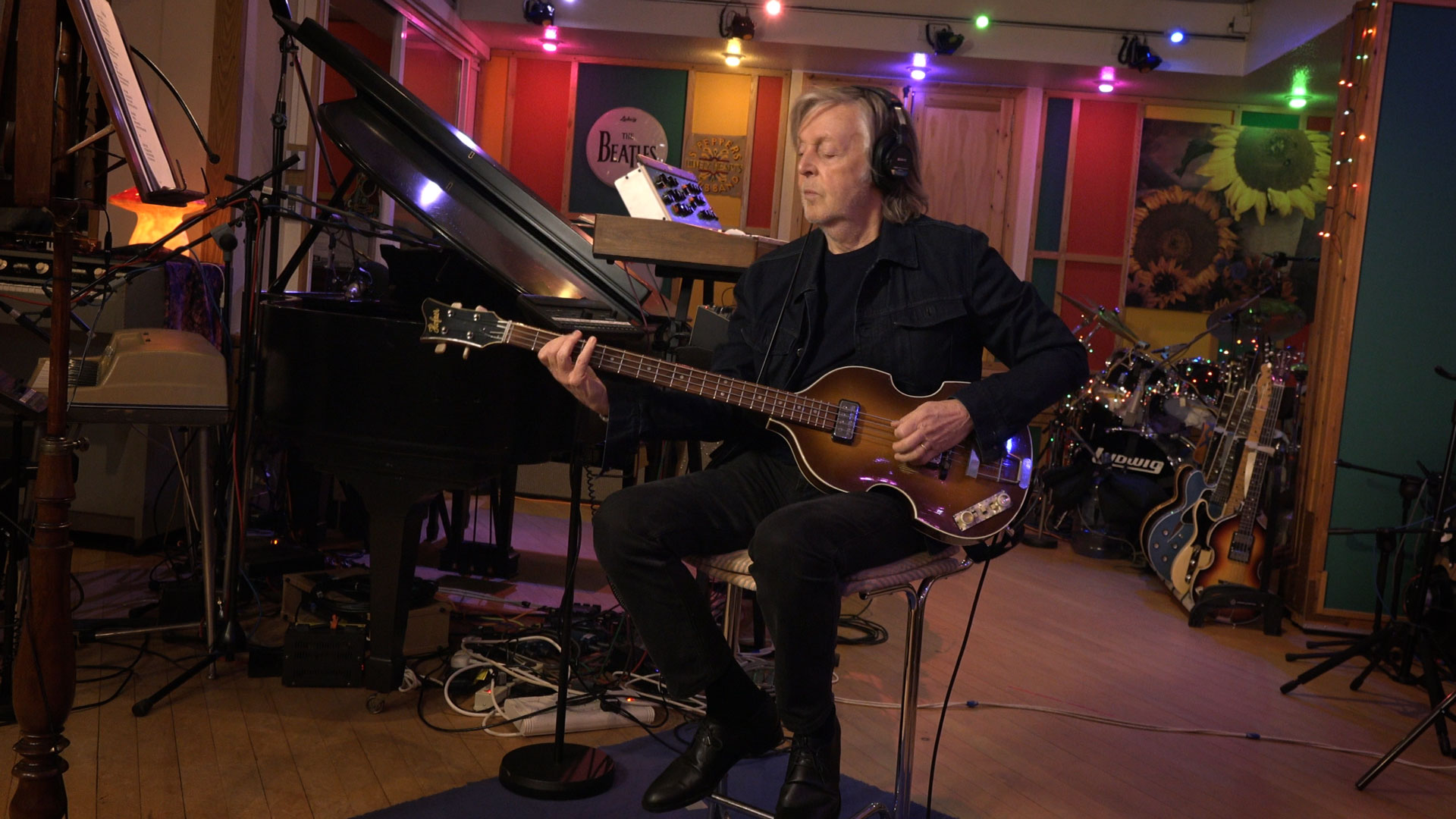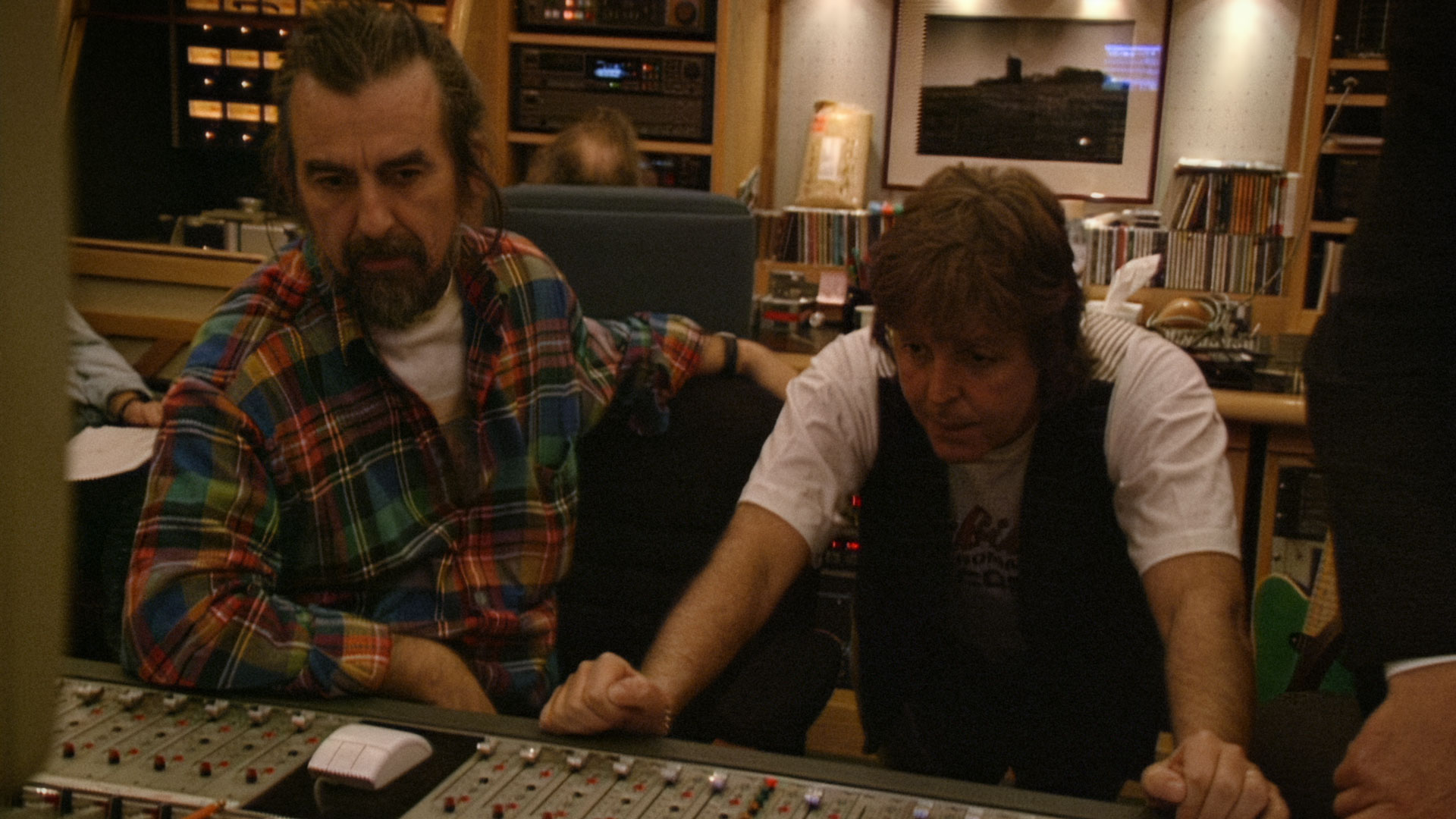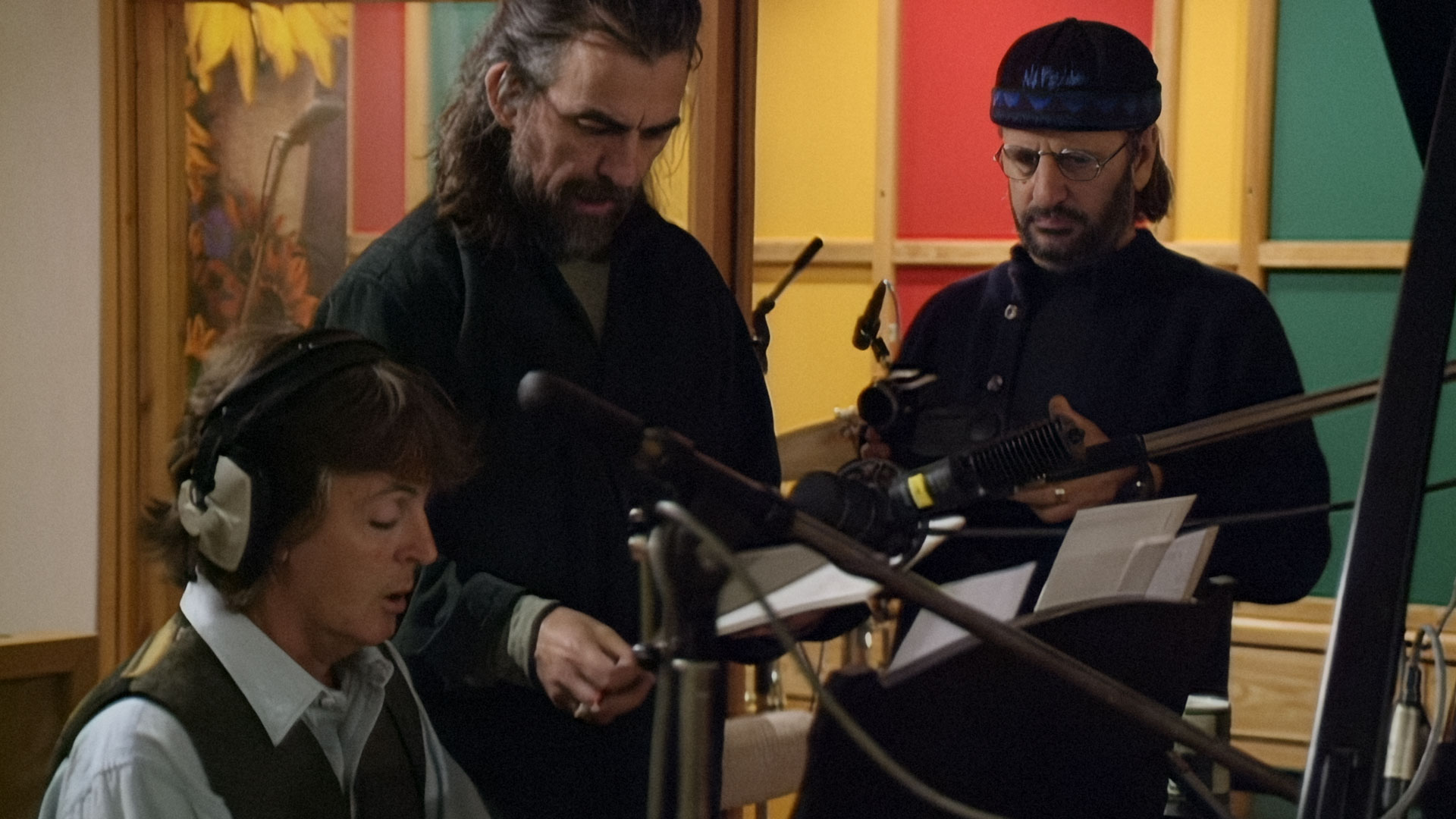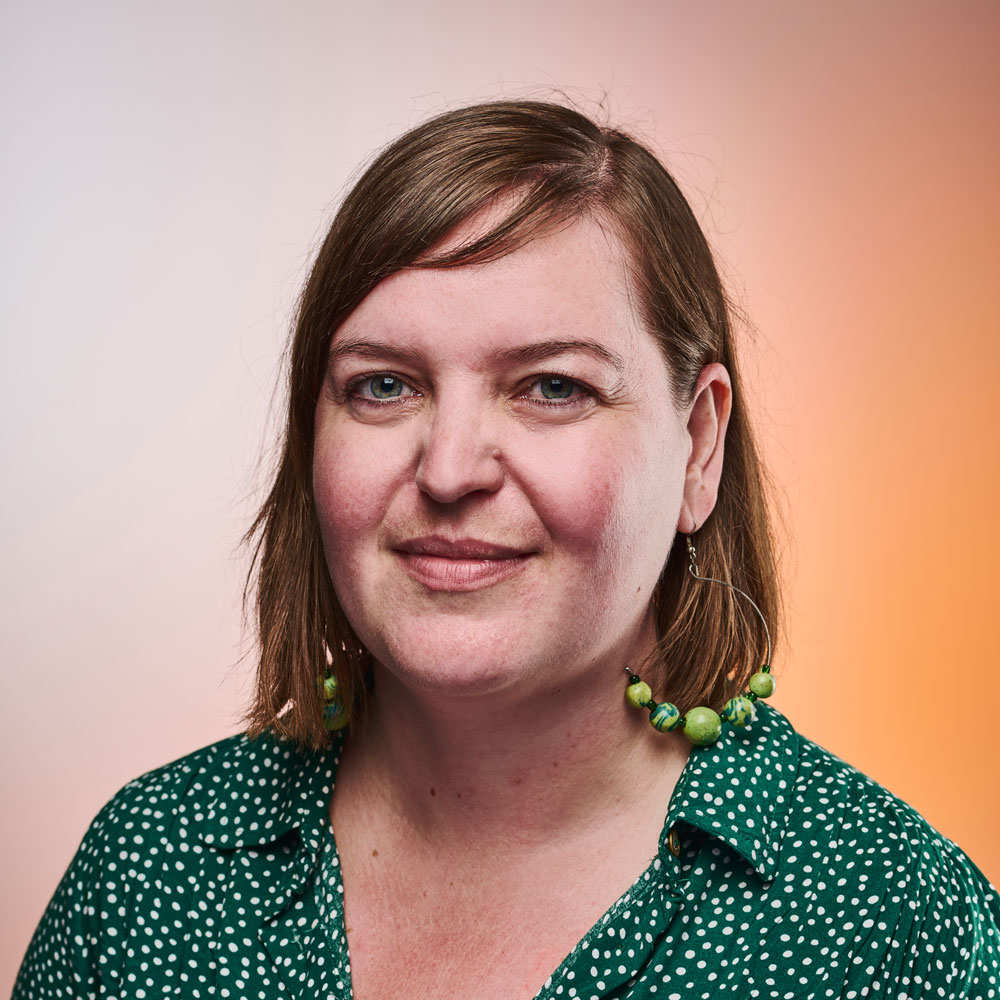How we made Now and Then - The Last Beatles Song short film
Director Oliver Murray explains how he created the new short documentary telling the story of The Beatles' last song, Now and Then.

Unless you've been doing some serious hibernation, you've probably heard that The Beatles have released a new song, Now and Then, almost four decades after it was first created by John Lennon.
After John's death in 1980, Yoko Ono gave Now and Then to the remaining Beatles in 1994 (along with Free As a Bird and Real Life). Paul, George and Ringo attempted to finish it at that point, but technological limitations meant John's vocals and piano couldn't be separated well enough to provide a clear, unclouded mix.
The song was then shelved for several decades, until technological advances (including AI) used in The Beatles: Get Back docuseries allowed it to be finally finished by the two surviving Beatles Paul and Ringo in 2022.
A moving and informative new short documentary, Now and Then – The Last Beatles Song, tells the song's story, from start to finish. Written and directed by Oliver Murray, the 12-minute film features exclusive footage and commentary from Paul, Ringo, George, Sean Ono Lennon and Peter Jackson, and has plenty to offer everyone from Beatles super-fans to those with even a passing interest in audio tech and music making.
As part of our How we made series, I caught up with Murray to find out more about the project...
Talk me through the creative process. What were the most important considerations?
First of all, the most important thing for me was that it felt fresh and contemporary, so we started out by recording new audio interviews with the surviving members of the band, Sean Ono Lennon and Peter Jackson. It was important to record only audio because that's my favourite way of getting intimate and conversational interview content.
I took these interviews into the edit and made a kind of podcast cut of the story, which became our foundation for the timeline. Then I started looking at The Beatles’ incredible archive of films and archived interviews from the past. I started to think how this material could be reinterpreted to tell a story and to create a structural device that allowed us to move backwards and forwards in time.
Then we started to weave the imagery and interviews together with music, and that is where it came alive. Of course, a real gift was having stems of the music track and access to the original ‘Now and Then’ demo because I was able to show John emerging out of the scratchy cassette tape and have his voice appear fully formed and solo’d in the mix.
I often describe the process as being like running laps of a running track
Oliver Murray
It was important to me that once we had the story of this track communicated, that we were able to broaden out the film to consider the whole legacy of the Beatles and what it means to people. This project clearly meant a lot to Paul and Ringo, and The Beatles mean a hell of a lot to many people all over the world so the release of the final Beatles song felt like a truly global cultural moment and that's what the film explores in the final third.
How did you work with Paul, Ringo, Sean and Peter Jackson? Did you fit their words to the film or the other way round?
Interviews are always a big part of my process, and are where I start because more often than not the answers that you get to questions lead you somewhere you didn't expect and change the course of the project, so I like to do those early. It's always useful to start with audio because it's also the most malleable and it's possible to go back for pick up interviews. Archive footage or access (with a camera) to the people you're talking to actually doing what they're talking about is much harder to acquire. You need to come up with lots of creative solutions to make the imagery work for the story.
It's always useful to start with audio
I often describe the process of what comes first as being like running laps of a running track. We start with audio interviews, move on to visuals, come full circle back to doing more audio interviews, and then adjust the visuals again. Then you repeat this process over and over until you get it right, factoring in composed music, graphics, archive restoration and script amends as you go.
Get the Creative Bloq Newsletter
Daily design news, reviews, how-tos and more, as picked by the editors.
What challenges did you come across when creating the film?
Taking on any Beatles story is quite a pressurised situation because they are so beloved all over the world and I wanted to make something that the fans like. Having said that you also want to make something that introduces a new audience to the music, in this case it was important we made something that appeals to younger people. So getting that balance right was a challenge.

How did you ensure the film would satisfy Beatles aficionados as well as more casual viewers?
I don't think Beatles aficionados mind if the storytelling is designed to include people that don't necessarily know everything there is to know about the Beatles, so it was important to explain the context adequately for someone discovering this story for the first time.
All the material that we used went down to New Zealand to be lovingly restored
The details are important so we make sure we didn't take any liberties when it came to what archive we used and wherever possible I made sure we showcased some rarely seen film material that even the hardcore fans hadn’t seen. I was very lucky that the Beatles regularly work with Peter Jackson's post production company Park Road post. All the material that we used went down to New Zealand to be lovingly restored and we produced a 4K picture with an Atmos sound mix that looks absolute fantastic. This gave the fans something really exciting to look forward to and also the more casual viewers got to enjoy the kind of cinematic experience that they've come to expect nowadays.
How do you think AI will impact the music industry?
I think AI is going to impact every corner of society. There’s a lot of press on its use in the creative industries, which is natural because its impact is easy to see, but I actually don't think there's much to be concerned about because it's just a tool. Some people will try and use it as a shortcut to creating speedily produced 'art' but there is no substitute for the nuances of human creativity and I really don't think audiences want 'bot' concerts anyway.
My favourite use of The Beatles archive was the yellow submarine
I suppose I am slightly worried that the decline of live music might be sped up due to the fact that young music fans are simply content with less exciting music coming out of their tiny phone. If live music and an appreciation of musicianship isn’t prevalent in our culture then we could start to forget what we’re missing.
Tell me about the graphics used in the film
We needed to go back and forth in time in the film, so I knew I wanted a date scroll very early on and it was in the original script that I wrote. I think my favourite use of The Beatles archive was the yellow submarine – in itself a time traveling device – as part of the date scroll. It fits so perfectly.
The look of The Beatles animation is amazingly contemporary given that it was made in the '60s, so I enjoyed using that as a graphical component. There is also a very specific brand identity to The Beatles that meant new graphic components are quite hard to include, so a few early ideas to make new imagery fell by the wayside very quickly.

How was VFX used in the film?
Some VFX work is very obvious – like the creation of a CGI alien in a blockbuster film – but there’s a whole other side of VFX that was in play on this project that was completely invisible in the finished film. The material we used to tell the story was sourced from many different countries – all of which film and store material at different frame rates and aspect ratios.
[Some of the VFX] is ultimately invisible in the finished piece
We had to create a 4K master that ran at 24 frames a second and this required very nuanced and surgical work that is ultimately invisible in the finished piece. In some instances film reels were damaged and needed frame-by-frame colour restoration, and in other instances reels needed to be completely rescanned and a new master created.
What is your favourite part of the finished film?
The emotional climax of the film is definitely the moment where we get to hear John's isolated vocal for the first time. It's quite an emotional moment to hear him emerge from that scratchy demo.
How does it feel to have played a part in something as iconic/groundbreaking as a new Beatles record?
It was an amazing experience. As you might imagine The Beatles just weren’t even on my list of people I wanted to work with because I thought that the chance had passed. To have been involved with such a one-of-a-kind bunch of creatives was very special and I hope I get to do it again soon.
How did you get the gig to make Now and Then?
I'm very thankful to have a good relationship with Universal Music and I've worked with some high profile musicians in the past like The Rolling Stones and Quincy Jones so that’s how I made the shortlist I guess. Then I pitched a script to Apple Corps, which is the business entity behind the Beatles, they liked it, and we went from there.
Which part of the process did you enjoy most?
Obviously getting to meet and work with Paul McCartney was a trip! But because the whole way through production I felt a lot of pressure to get the film right, I think the part that I enjoyed the most was seeing the film connect with broadcasters and streamers the way it did. Their enthusiasm settled my nerves when it came to guessing how an audience was going to take it. It actually went live with 26 broadcasters and five streamers around the world, which was amazing to see.
You can find out more about Oliver Murray via his website.

Thank you for reading 5 articles this month* Join now for unlimited access
Enjoy your first month for just £1 / $1 / €1
*Read 5 free articles per month without a subscription

Join now for unlimited access
Try first month for just £1 / $1 / €1

Rosie Hilder is Creative Bloq's Deputy Editor. After beginning her career in journalism in Argentina – where she worked as Deputy Editor of Time Out Buenos Aires – she moved back to the UK and joined Future Plc in 2016. Since then, she's worked as Operations Editor on magazines including Computer Arts, 3D World and Paint & Draw and Mac|Life. In 2018, she joined Creative Bloq, where she now assists with the daily management of the site, including growing the site's reach, getting involved in events, such as judging the Brand Impact Awards, and helping make sure our content serves the reader as best it can.
